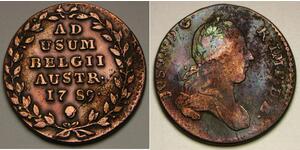(售价 $793.0)
1649, Brunswick-Lunbeburg-Hannover, George William. Silver 1¼ Redemption Thaler. R!
Mint year: 1649
Denomination: Thaler
Mint Place: Zellerfeld
Reference: Davenport 6531, Welter 1568, KM-. Rare!
Condition: Tooled rim (removed suspension loop), a few dark oxidation spots, value ("1¼") cuntermark in obverse left field, otherwise VF+
Weight: 35.91gm
Diameter: 50mm
Material: Silver
Obverse: Piety and Justice in a landscape under a tree. Arm holding wreath and ivine light from heaven above. Value countermark (1¼) in left field.
Legend: PIETAS ET JUSTITIA
Reverse: Draped bust of George william right within central medallion, topped by ornate helmet. All within a wreath, which adorned with fourteen crowned shields.
Comment: Mint master's initials (H-S) and datee (1-6-6-2) near rim below.
Legend: V G G GEORG WILHELM HERTZOG Z B U L
The first multiple talers were struck by Duke Julius of Brunswick-Wolfenbuttel in 1574 for an ingenius reason. Silver output from the mines in the Harz Mountains was on the upswing, and at the same time uncertainty spread across the region. The Reformation initiated by Luther was in full swing. Catholic church properties were being seized and sold off. Pogroms against Jews were appearing here and there. The Inquisition had already started burning Protestants at the stake. Alliances and allegiances reacted to all these threats.
Julius brilliantly conceived of a plan to put his Harz Mountains silver to good use. A quantity of the silver was set aside as a hedge against the exigencies of war. To do this, he struck a series of Thalers in denominations ranging from 1-1/4 up to 16 thalers. Next he issued orders that property owners were to purchase at least one of these new larger coins, the size of the denomination depending on the owner's wealth and rank. The owners of these larger pieces were required to produce the coins on demand and redeem them in exchange for the local debased coinage. While the coins could be pawned if necessary, they could not be sold or traded away. Thus Julius had on hand a substantial amount of money with known whereabouts, sensibly diffused and spread throughout the country, thereby reducing the risk of seizure of sizable treasure during a conflict. For this reason the coins were named in the inscription as "Julius Loeser" (redeemers) on the reverses of the 1574 issues -- the appellation of "redemption Talers" attaching to these coins. In this lot we find a delightful example of this scheme.
George William German: Georg Wilhelm (Herzberg am Harz, 26 January 1624 – 28 August 1705, Wienhausen) was Duke of Brunswick-Lüneburg and ruled first over the Principality of Calenberg, a subdivision of the duchy, then over the Lüneburg subdivision. In 1689 he occupied the Duchy of Saxe-Lauenburg.
George William was the second son of George, Duke of Brunswick-Lüneburg. In 1648, he received Calenberg from his elder brother Christian Louis when Christian Louis inherited Lüneburg. On Christian Louis' death in 1665, George William inherited Lüneburg, and gave Calenberg to his next brother, John Frederick.
In exchange for being freed from the obligation to marry Princess Sophia of the Palatinate, George William ceded Lüneburg to his younger brother Ernest Augustus, settling for the smaller duchy of Celle and promising to remain unmarried so that he would produce no legitimate heir who might pose a challenge to his brother's claim. Ernest Augustus then married Sophia and became the Duke of Hanover. This left George William free to indulge his desires to travel and socialize without great encumbrances of state.
Things changed in 1665, when George William entered into a morganatic marriage with his mistress Eleanor, Countess of Wilhelmsburg. In 1666 their daughter Sophia Dorothea was born. Ten years later in 1676, desiring to improve the status of his mistress and daughter and in open violation of his promise, George William married Eleonore and legitimized Sophia Dorothea. This development greatly alarmed his relatives, as it threatened to hinder the contemplated union of the Lüneburg territories. However, in 1682, the difficulty caused by George William's having a family and heirs of his own was bridged over by the marriage of his daughter with his nephew, George Louis (who later became King George I of Great Britain), son of George William's younger brother Duke Ernest Augustus, who became elector in 1692.
In the Swedish-Brandenburg War he participated from 1675 to 1676 in the campaign against Bremen-Verden as commander-in-chief of the allied forces against Sweden.
When in 1689 Julius Francis, Duke of Saxe-Lauenburg, died leaving two daughters, Anna Mary Francisca and Mary Francisca Sibylla Augusta, only, George William claimed the succession for himself. Their father had provided for the legal grounds of female succession in Saxe-Lauenburg, but George William simply invaded the duchy with his troops, thus inhibiting the accession of the lawful heiress Anna Mary Francisca.
Also other monarchies claimed the succession, resulting into a conflict involving further the neighbouring duchies of Mecklenburg-Schwerin and of Danish Holstein, as well as the five Ascanian-ruled Principalities of Anhalt, the Electorate of Saxony, which had succeeded the Saxe-Wittenbergian Ascanians in 1422, Sweden and Brandenburg.
However, only George William and Duke Christian V of Holstein (also the Danish king) were militarily engaged. On 9 October 1693 they agreed (in the Hamburg Comparison, or Hamburger Vergleich) that George William - who now de facto held most of Saxe-Lauenburg - would retain the duchy in a personal union. However, the Emperor Leopold I did not accept this violent act. He held the Saxe-Lauenburgian exclave, the Land of Hadeln, which George William had not occupied, in imperial custody. But apart from that Leopold did not attempt to use force in Saxe-Lauenburg to enthrone its legitimate duchess. In 1728 his son the Emperor Charles VI finally legitimised the de facto takeover and enfeoffed George William's second successor, the Elector George II Augustus of Hanover (also king of Great Britain) with the duchy of Saxe-Lauenburg, but Hadeln remained in imperial custody until 1731, when it was ceded to George Augustus too.
2 Liard Austrian Netherlands (1713-1795) 銅
本组有 4 钱币 / 4 售价
⇑

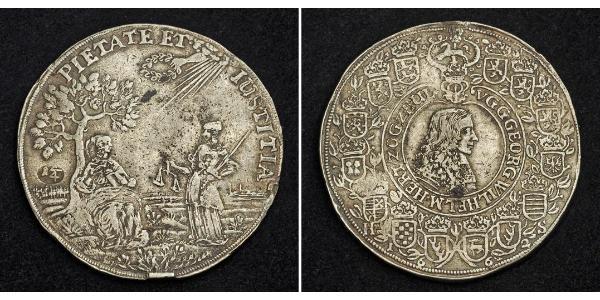






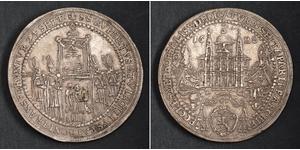

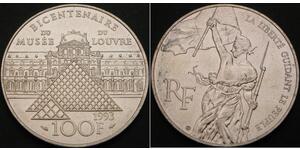





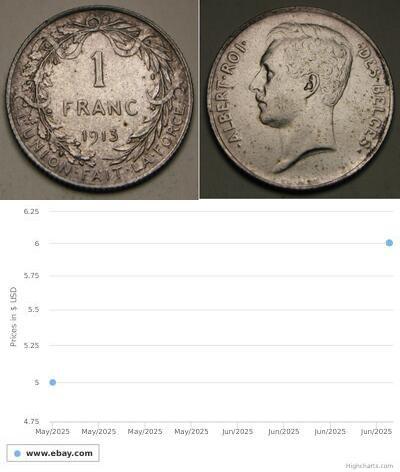
-300-150-N7QKX9ISGfEAAAFX9awaL_VH.jpg)
